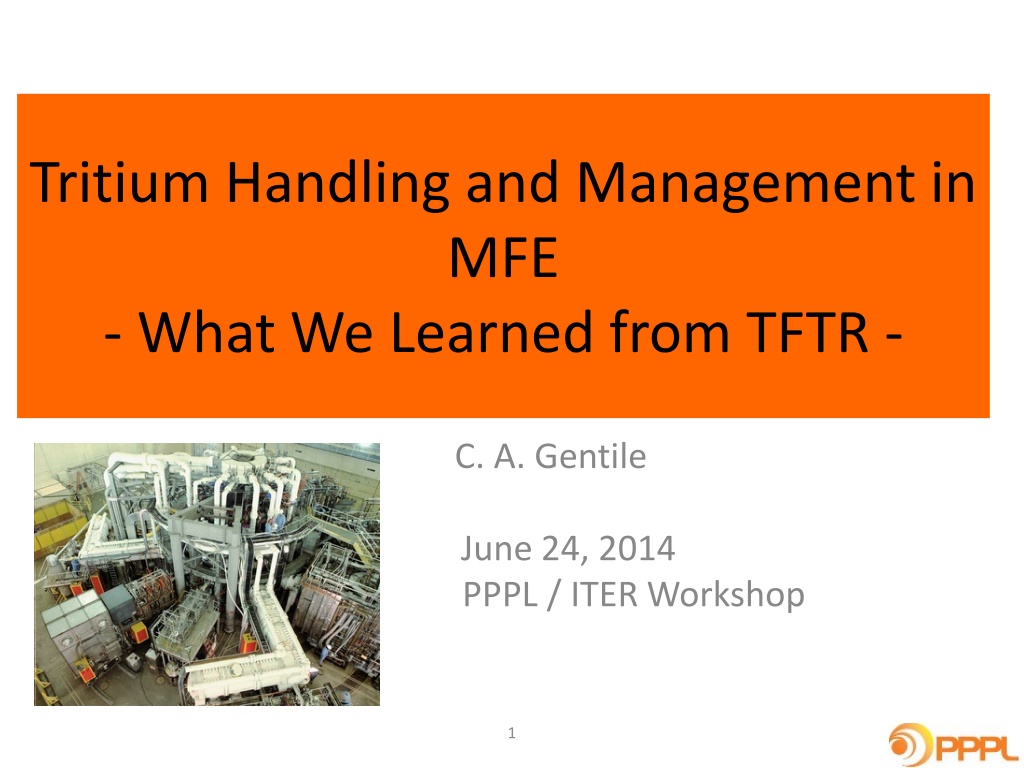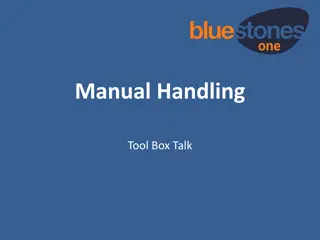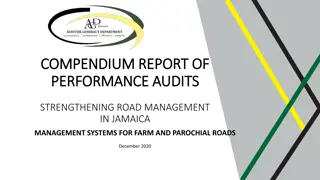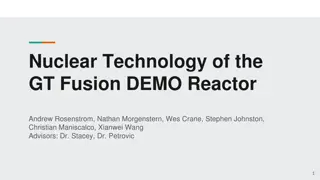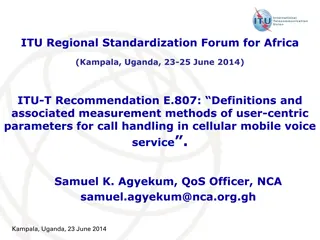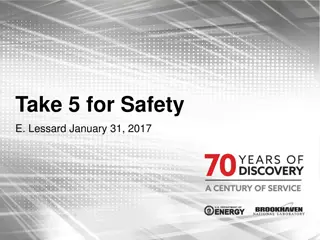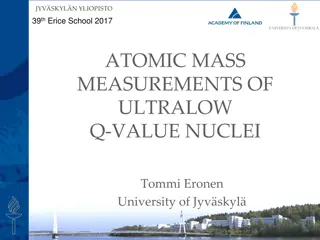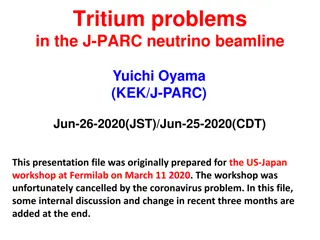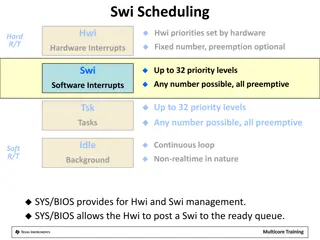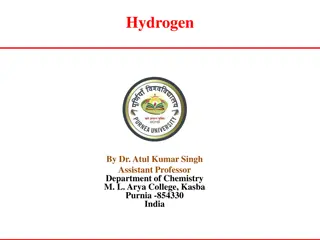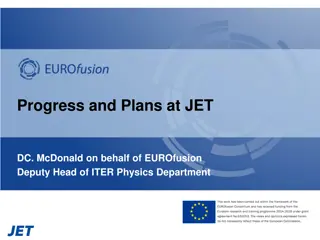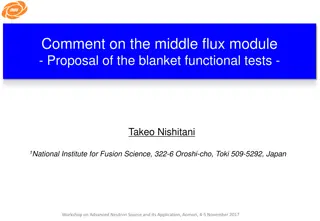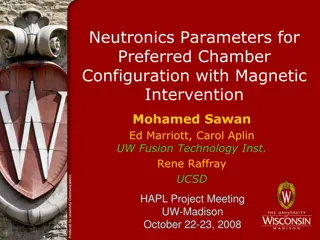Tritium Handling and Management in MFE: Lessons from TFTR
The TFTR project processed tritium in support of D-T operations, with Tritium coming mostly from Savannah River National Laboratory. Topics covered include tritium monitoring, accounting, and contamination control in fusion energy research facilities, emphasizing real-time monitoring and efficient management techniques.
Download Presentation

Please find below an Image/Link to download the presentation.
The content on the website is provided AS IS for your information and personal use only. It may not be sold, licensed, or shared on other websites without obtaining consent from the author.If you encounter any issues during the download, it is possible that the publisher has removed the file from their server.
You are allowed to download the files provided on this website for personal or commercial use, subject to the condition that they are used lawfully. All files are the property of their respective owners.
The content on the website is provided AS IS for your information and personal use only. It may not be sold, licensed, or shared on other websites without obtaining consent from the author.
E N D
Presentation Transcript
Tritium Handling and Management in MFE - What We Learned from TFTR - C. A. Gentile June 24, 2014 PPPL / ITER Workshop 1
Parameters From 1993 to 1997 the TFTR Project processed ~ 99 grams of tritium in support of D-T operations. Tritium for TFTR mostly came from the Savanna River National Laboratory (SRNL) located in Aiken, SC. During 1997, the Tritium Purification System was successfully commissioned, closing the D-T fusion fuel cycle at the site. First to achieve this in the USA. During the TFTR D-T campaign, > 1,000 D-T shots were performed. Tritium is expensive. Being a National Laboratory, we were supplied tritium from the DOE. 2
Topics Tritium Monitoring Real time/ Passive Process, Area, Occupational, Environmental. Tritium Accounting Material Control & Accounting Program. Tritium Contamination Control Containment / Confinement. Action limits. Tritium Ground Water Contamination Down wash- from stack releases. Tritium Operator Training Qualification Program/ Certification Program Documentation. 3
Tritium Monitoring Fusion energy research facilities (where there is a fusion machine) have more challenging requirements than tritium facilities. Real time tritium monitors should be gamma-compensated. In some processes a heat mantle may be required to reduce internal tritium. In some locations, should be magnetically shielded with mu metal. Near machine locations should have to output frozen during shot(s). Need to determine the appropriate range of the detector application. Do not locate action / alarm set points close to internal range changes. Internal check sources are valuable for daily (automated ) monitor responses. Several vendors in the market for the supply of tritium monitor equipment including Femto-Tech, Overhoff Technology Corporation, Scintrex. For hand held real time tritium monitors, appropriate dust filters should be used. Length of tubing for external monitoring should to be limited to shortest length possible. 4
Tritium Accounting Tritium accounting is difficult, particularly when starting up a new system. Tritium tends to be sticky . Coats many internal surfaces. Consider pre-wetting process lines prior to full start up. When measuring tritium in different process gases (i.e. Ar, N2, He) independent monitor response curves need to be developed to get best measurements of tritium in the stream Tritium accounting needs to be a real-time activity. During TFTR D-T operations >8,000 tritium transfers were performed. These were all recorded in real time and reviewed on a daily & weekly basis by a committee consisting of project technical cogs. 5
Tritium Contamination Control Contamination is relatively easy to detect. Not always easy to control. In vacuum vessels lined with graphite, tritium tends to co-deposit on graphite surfaces. Additionally contains tritiated dust. Easily migrates. The use of Glove boxes to contain process lines is highly recommended. Positive pressure ( results in less HTO in box ) v. Negative pressure ( results in less T2 into local rooms) glove boxes. TFTR operated glove boxes at negative pressure. Blanket gases in glove boxes can suppress the formation of HTO, but can increase heat loads on equipment in the glove box leading to premature failures of motors and heat sensitive equipment. In some areas (around valves) an over-pressurized blanket gas can be useful in attenuating tritium leakage. Over pressure blanketing technique is very effective around seals. Pushes gas into the system. 6
Tritium Control Action Levels PPPL surface removal tritium contamination level 1,000 dpm/100 cm2. DOE surface removal tritium contamination level = 10,000 dpm/100 cm2. ANSI proposed surface tritium contamination level = 100,000 dpm/100 cm2. PPPL (liquid) release limit to the municipal sanitary system = 1 Ci / per calendar year. PPPL ( gaseous)release limit to the station stack = 500 Ci / year. PPPL airborne limit in work areas = 20 micro Ci/m3. PPPL tritium site limit = 50,000 Ci. 7
Containment Glove Boxes Glove boxes work very well as secondary and tertiary containments. In some deployments internal box heat buildup can be problematic. Gloves and glove box seals often degrade due to ozone interactions. Provides opportunity for using various blanket gases. Provides time to respond to process leaks in lines and tanks. 8
Confinement Elephant ( portable negative ) trunks provide excellent localized negative pressure. Can be easily configured to exhaust to stack ventilation system. During plant construction, elephant trunk stations should be installed to provide for elephant trunk use in controlled areas. Typically provide 100 LFM flows. 9
Ground Water Contamination Down wash from stack releases can get into the ground water. After several months of operation increased levels of tritium was found in site ground water. Important to locate rain gutters and down sprouts to locations that do not direct rainwater to ground soil in / and around the facility. Best to direct local rain water to storm drains. A/C condensate should be monitored for tritium prior to release. During summer months at TFTR >10,000 gallons / month of low level HTO water was from air conditioning condensate. 10
Tritium Operator Training Certification or Qualification Certification recommended for operators of nuclear systems. Requires testing, including oral boards. Qualification useful for non-nuclear and secondary operations (i.e., I&C technicians, Motor Generator Operators, etc. ). Some testing / no oral board. Operators need to have a strong conduct of operations culture. Must be competent in following detailed procedures. Those with military-type backgrounds (i.e., the US Nuclear Navy) are well suited for this type work. Particularly for shift work in support of 24/7 operations. 11
Documentation A large investment in detailed procedures & safety documentation costing several million dollars used during TFTR. Use of controlled documentation highly effective in ensuring that the best / correct information was available to the operators. Ensuring appropriate operational outcome. The use of operator aids highly useful if appropriately controlled. Procedures used as a tool for ensuring positive control and safe configuration. 12
